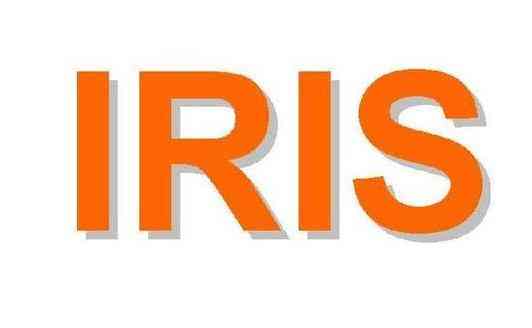|
UDCa78.675
IS0
I NT ERN AT1 O NA L O RG A N IZAT I O N FOR STA N DARD I2 AT1 ON
I SO R E CO M M EN DATI O N
R 599
PLASTICS
DETERMINATION OF THE PERCENTAGE
OF EXTRACTABLE MATERIALS IN POLYAMIDES
1 st EDITION
August 1967
COPYRIGHT RESERVED
The copyright of IS0 Recommendations and IS0 Standards
belongs to IS0 Member Bodies. Reproduction of these
documents, in any country, may be authorized $herefore only
by the national standards organization of that country, being
a member of ISO.
For each individual country the only valid standard is the national standard of that country.
Printed in Switzerland
Also issued in French and Russian. Copies to be obtained through the national standards organizations.
---------------------- Page: 1 ----------------------
BRIEF HISTORY
The IS0 Recommendation R599, Plastics-Determination of the percentage of extract-
able materials in polyamides, was drawn up by Technical Committee ISO/TC 61, Plastics,
the Secretariat of which is held by the United States of America Standards Institute
(USASI).
Work on this question by the Technical Committee began in 1958 and led, in 1961,
to the adoption of a Draft IS0 Recommendation.
This first Draft IS0 Recommendation (No. 512) was circulated in June 1962 to all
the IS0 Member Bodies for enquiry. As the results of this consultation were not considered
satisfactory, the Technical Committee presented a second Draft IS0 Recommendation,
which was circulated to all the Member Bodies in July 1964 and which was approved,
subject to a few modifications of an editorial nature, by the following Member Bodies:
Italy Sweden
Austria
Belgium Japan Switzerland
Canada Korea, Rep. of U.A.R.
Chile Netherlands United Kingdom
Czechoslovakia New Zealand U.S.A.
Denmark Poland U.S.S. R.
Finland Romania
Germany South Africa,
India Rep. of
One Member Body opposed the approval of the Draft:
France
The second Draft IS0 Recommendation was then submitted by correspondence
to the IS0 Council, which decided, in August 1967, to accept it as an IS0 RECOM-
MENDATION.
-2-
---------------------- Page: 2 ----------------------
IÇO/R 599 - 1967 (E)
IS0 Recommendation R 599 August 1967
PLASTICS
DETERMINATION OF THE PERCENTAGE
OF EXTRACTABLE MATERIALS IN POLYAMIDES
1. SCOPE
1.1 This IS0 Recommendation describes methods for the determination of the percentage of
extractable materials in polyamides. These materials are for the most part composed of
monomer and low molecular mass polymers, and water and possibly additives. Consequently,
L
in order to know the percentage of monomer and low molecular mass polymers, it is necessary
to determine the water content of the sample (see IS0 Recommendation R . . . *). If the
additive (for example, a plasticizer) is extractable by the liquid, the method cannot be applied
without special procedure agreed between contracting parties.
1.2 Two methods are described :
- Method A, extraction with boiling water for polyamide 6 (polycaprolactam), and
- Method B, extraction with boiling ethanol for other polyamides (66, 610, 11, etc.).
1.3 The calculated percentage may be of importance when evaluating results found with the
methods for
(a) determination of the viscosity number of polyamides in dilute solution (see IS0 Recom-
mendation R 307, Plastics-Determination of the viscosity number of polyamides resins
in dilute solution), and
L
(b) determination of the " viscosity ratio " of polyamides in concentrated solution (see
IS0 Recommendation R 600 *, Plastics-Determination of the viscosity ratio of polyamides
in concentrated solution).
NOTE.-It should be noted that the extract as determined by method A includes water where as the residue
obtained by method B is the dry extract.
* At present Draft IS0 Recommendation No. 1004, Determination of the water content in polyamides.
I
-3-
---------------------- Page: 3 ----------------------
IÇO/R 599 - 1987 (E)
2. METHOD A FOR POLYAMIDE 6 OR ANY OTHER POLYAMIDE
CONTAINING AMINOCAPROIC RESIDUE
2.1 Apparatus and supplies
(a) Means for reducing the sample to a finer state of division.
(b) Extraction bag, made from polyamide 66 thread (for example, 1.7 tex * woven to 20 threads
per centimetre) with a diameter of about 7 cm and a height of about 18 cm. Before first
use, the bag should be extracted in boiling distilled water for 24 hours.
(c) Weighing bottle, 100 ml with ground-glass stopper.
(d) Flask, 500 ml with ground neck.
(e) Reflux condenser, with ground joint to fit on the 500 ml flask.
(f) Appropriate heating device for the 500 ml flask.
(g) Balance, to weigh to 1 mg.
(h) Sieve, with mesh opening 2.36 mm.
(i) Desiccator, with calcium chloride.
0) Oven maintained at 80 & 2 OC.
(k) Distilled water.
2.2 Preparation of sample
Take a representative sample of the polymer and reduce it to small pieces to pass through
the sieve (h), but not through the bag described under clause 2.1 (b). The water content
should be determined previously.
2.3 Procedure
After extracting the bag 6 hours in boiling distilled water and drying at 80 f 2 "C for 4 hours,
weigh the bag in the weighing bottle to the nearest 1 mg. Introduce about 10 g of the sample
with known water content into the bag and knot th
...














